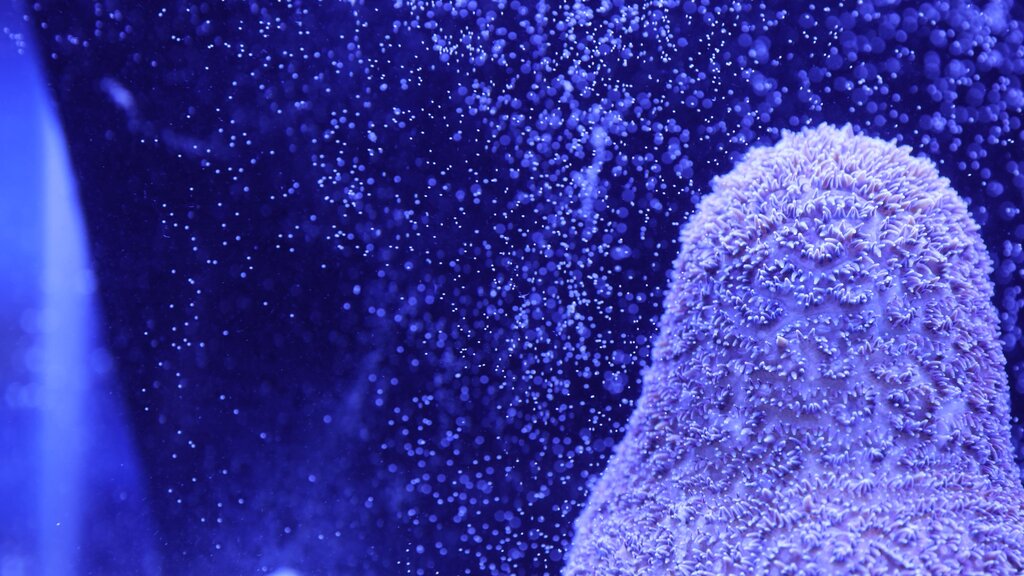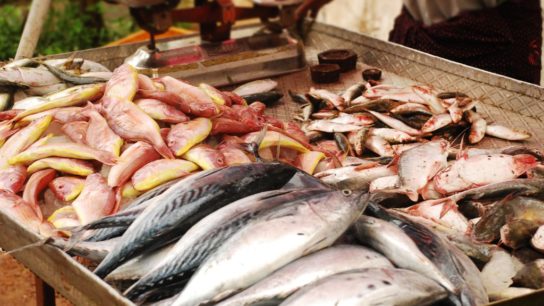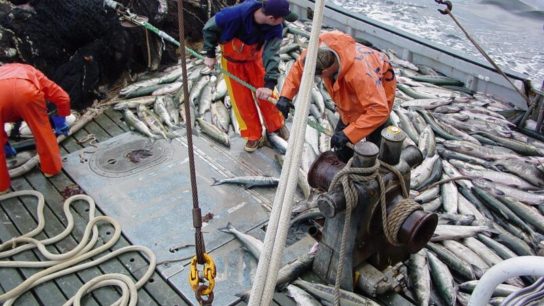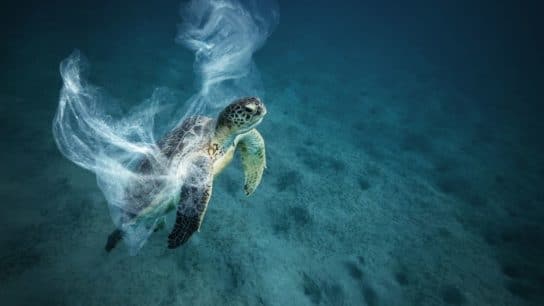Stony Coral Tissue Loss Disease has wreaked havoc on Floridian and Caribbean coral reefs for several years now, with existing threats from global warming and commercial fishing exacerbating the situation further. Nevertheless, conservation work currently undertaken by scientists throughout the United States provides a glimmer of hope for future restoration. With an advanced understanding of coral reproductive habits, and the technological tools to match, several species of corals have been bred in captivity for future out-planting and reef reconstruction. Could lab-grown corals be the key to conservation?
—
Florida’s Coastal Reef has suffered devastating effects of Stony Coral Tissue Loss Disease (SCTLD) for several years now, following an outbreak on the coast of Miami-Dade County in 2014. Due to its high rate of transmission, numerous reefs along the Caribbean have similarly fallen victim to the infection. Although marine epidemics are rather common, due to extensive water circulation, the situation at present greatly concerns scientists for its substantial geographic range, lengthy duration, lack of seasonality, quick progression, high mortality rate and indiscriminate nature. It first affects the symbiotic algae, or zooxanthellae, living within coral structures. Thereafter, tissue cells begin to rupture and die.
Over 96,000 acres, approximately 95%, of the Florida Reef Tract has been affected by the disease, whilst in the Mexican Caribbean the outbreak has had an impact on more than 30% of all corals. SCTLD largely targets reef-building corals, such as pillar corals (Dendrogyra cylindrus), elliptical star corals (Dichocoenia stokesii), and boulder brain corals (Colpophyllia natans), some of which are already listed as endangered species. Once infected, mortality rates range from 66-100%; some corals suffer substantial tissue erosion without succumbing completely to the disease, whilst for others, death occurs within a few weeks or months.
In 2015, attempts to identify the potential causes behind the outbreak commenced with USD$16 million of funding. A collaboration between numerous federal, state, and local agents, NGOs, universities and community volunteers allowed for an extensive investigation into the possible pathogenic origin. Numerous sampling and laboratory analyses were conducted on ailing corals, epidemiological examinations were carried out, and field tests were used to evaluate the effectiveness of treatment strategies.
Despite these tremendous efforts, the pathogen has yet to be identified due to the complex nature of marine environments. There is some evidence suggesting the involvement of a bacterial agent, as antibiotics seem to reduce the progression of the disease in infected corals. Nevertheless, it is also possible that bacteria simply acts as a secondary cause of the corals’ illness, having been already weakened by the primary pathogen and made susceptible to bacterial infection.
The investigation into the exact nature of the outbreak was further exacerbated by the effects of environmental conditions. As aforementioned, marine epidemics are rather common due to extensive water circulation. However, the spread of SCTLD from Florida to the Caribbean did not follow any known oceanographic circulation patterns, thus raising the question of how the disease managed to spread so rapidly and over such a great distance. It has been hypothesised that the release of ballast water from shipping vessels was a potential factor.
Additionally, rising sea temperatures, ocean acidification and sediment run-off from the land have proved fatal to corals for numerous years now. Such environmental hostility inevitably increases corals’ susceptibility to new infections and weakens their immune response. It is thus unclear whether SCTLD is a particularly aggressive infection, or whether corals now simply suffer an increased vulnerability to diseases.
Since coral disease analysis is a relatively recent endeavour, little data was collected prior to the outbreak on the microbiome (co-existing bacteria, fungi, algae and other organisms living within coral structures) of healthy corals. It is thus difficult to make a comparison with data collected from affected corals.
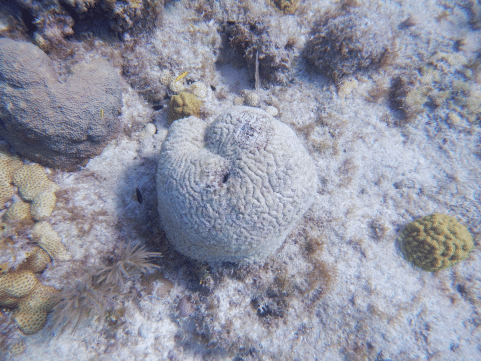
Nevertheless, complications with determining the specific pathogen responsible for the epidemic have not hindered recovery and rescue operations. Along the Florida Reef Tract, 188 sites have been established for monitoring the state of corals and coral-dependent species. Around 2,341 coral colonies are currently under careful care, with symptomatic corals receiving antibiotic treatment. Approximately 2,800 corals have been rescued from decaying reefs and placed in aquaria for safekeeping until they can be returned to the ocean. Since corals are extremely sensitive to their environment, tanks are fitted with UV lamps, local fish, and artificial water currents to mimic their natural habitat, and corals are fed shrimp through pipettes. This has not only prevented mass fatalities, but has also preserved the diversity of species so characteristic of Floridian and Caribbean reefs. Furthermore, research into the immune responses of these captive corals has allowed for the development of well-informed treatment and prevention strategies.
Most incredibly, 22 sites from across the United States have successfully bred several species of lab-grown stony corals. This achievement is intended to lead to the large-scale propagation of corals for future restoration of reefs, not only in Florida and the Caribbean, but in waters that have suffered greatly from global warming. Since extensive damage to reefs causes entire coral colonies to perish, a gap forms between certain species and prevents them from reproducing. Thus, the out-planting of certain stony lab-grown corals can help bridge the gap by establishing the base for new colonies.
You might also like: How 3D-Printed Tiles Can Help Restore Corals in Hong Kong
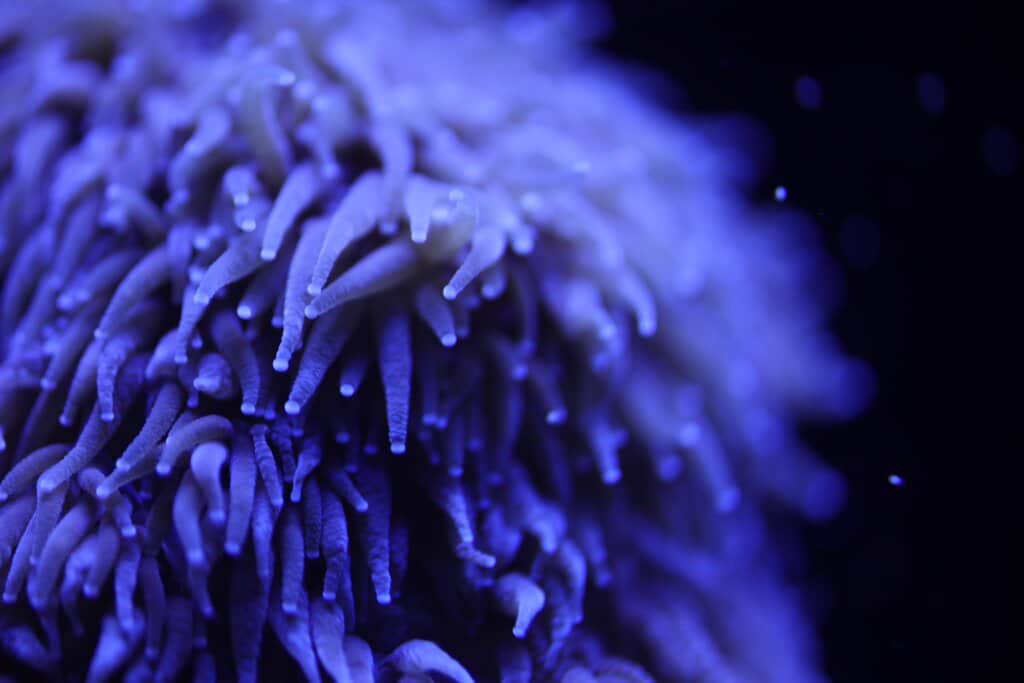
However, researchers are not only breeding the same coral species found naturally along ocean floors. By studying the genetics of rescued corals, attempts are being made to cross-breed diverse species of corals which could potentially be more resistant to diseases such as SCTLD, as well as to other threats such as rising sea temperatures. In a press release issued in August 2020, after having successfully bred Atlantic pillar coral (Dendrogyra cylindrus) in their laboratory, The Florida Aquarium stated, “lab-induced spawning allows us to produce more larvae with a much higher diversity of parents than we ever could from wild spawning.”
So why is this feat so remarkable? Whilst the captive breeding of marine life has become relatively commonplace within society, the breeding of lab-grown corals is notoriously difficult. As aforementioned, lab-grown corals are extremely sensitive to their environment, and even more so when it comes to mating. Stimulation of the reproductive cycle requires numerous environmental conditions to be achieved to an excruciating degree of specificity. Therefore, within the laboratory, water temperature, currents, tides, hours of sunlight and lunar cycles are controlled using LED lights and computer operating systems.
In November 2020, the first batch of coral offspring bred at The Florida Aquarium were out planted in Miami-Dade County in an attempt to begin restoration works on the reef. This gave researchers the chance to observe how well the lab-grown corals integrated into their new environment, and thus to identify appropriate sizes, spacing, quantities and species for differing parts of the reef. In July 2021, after acclimatising several mountainous star corals (Orbicella faveolata) to ocean conditions, they were released into Biscayne National Park, which has been greatly affected by SCTLD.
In addition to restoration through out-planting, these achievements are incredibly important in terms of conservation efforts as well. By breeding species with previously-elusive life cycles, researchers can gain a better understanding of the specific threats posed to these species in the wild and the conservation strategies best suited to them. Such was the case with the ridged cactus coral (Mycetophyllia lamarckiana), after its reproductive cycle was documented for the first time by The Florida Aquarium in April 2020.
The preservation of a wide range of coral species is extremely important to maintain balance and stability within marine ecosystems. Although coral reefs cover less than 1% of the world’s ocean floors, around 25% of marine fish species utilise or inhabit coral reefs at some point in their lives. They provide shelter for several animals, protect shorelines against strong storms and flooding, and support local communities who rely upon the ocean for their livelihood. In southeast Florida alone, coral reefs are valued at USD$8.5 billion, as they also act as a significant attraction for tourism.
Given the multitude of adversities suffered by these corals, their resilience and ability to survive despite mounting stress gives researchers great hope for their future. There remain many survivors on infected reefs, including colonies of highly vulnerable species, and restoration efforts have proven effective thus far.
By addressing the threats and stressors to corals of which the origins we are aware, we can all do our part in assisting restoration efforts on reefs. Global actions of great importance include, but are not limited to: minimising turbidity, sedimentation, and pollution from land-based runoff; limiting direct physical injury to corals from overfishing, anchors and coastal construction; and reducing impacts of global warming, such as warming oceans and acidification. As public awareness surrounding the importance of corals has increased substantially in recent years, the future of reef conservation is looking brighter with each passing day.
Spawning process of the Ridged Cactus Coral, as documented by The Florida Aquarium in April 2020 (source: The Florida Aquarium).
Featured image by: The Floria Aquarium








